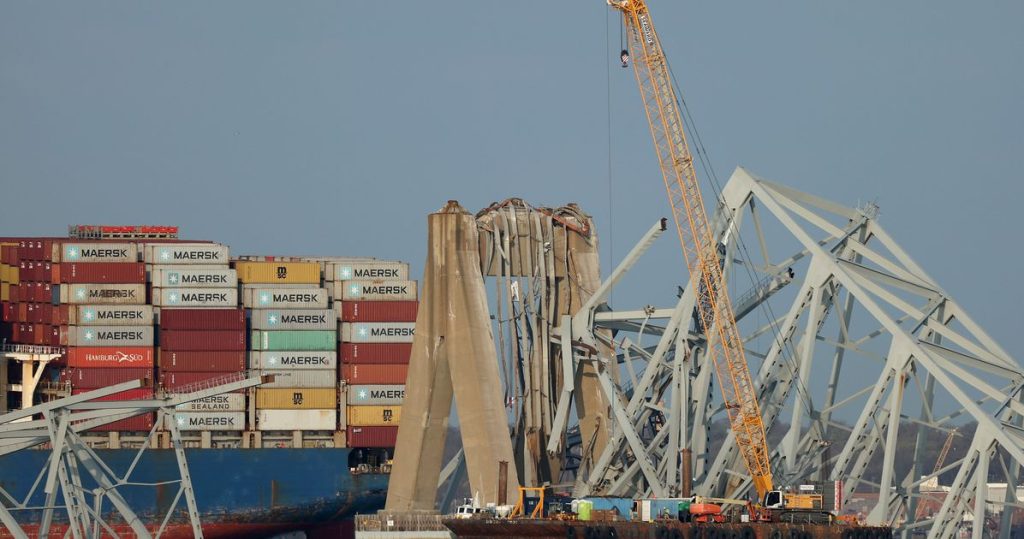The largest crane on the Eastern Seaboard was transported to Baltimore to begin removing the wreckage of a collapsed highway bridge that has halted a search for four missing workers and blocked the city’s port from operating. Maryland Gov. Wes Moore stated that the large crane will be one of at least two used to clear the channel of the twisted metal and concrete remains. The U.S. Army Corps of Engineers and the Navy were mobilizing major resources to assist in the removal process as the nation’s economy relies on the port’s operation. President Joe Biden approved $60 million in immediate aid for the reconstruction of the bridge, emphasizing that the recovery process will be lengthy.
The aftermath of the cargo ship collision and bridge collapse resulted in devastating effects, with divers recovering the bodies of two workers and four still missing. The vehicles of the missing workers appear to be encased in concrete and debris, making it difficult for recovery efforts to proceed. While state police have indicated that the collision seemed accidental, federal and state officials are continuing to investigate the cause of the incident. The victims were part of a construction crew and were from Mexico, Guatemala, Honduras, and El Salvador.
The cargo ship involved in the collision, the Dali, was en route from Baltimore to Sri Lanka and owned by Grace Ocean Private Ltd. Synergy Marine Group, the ship’s manager, expressed sympathy for the victims’ families and highlighted the impact of the incident on Baltimore’s economy. The ship was carrying almost 4,700 shipping containers, 56 of which contained hazardous materials. Damage caused by the collision has resulted in an oil spill in the waterway, with efforts to contain and mitigate the environmental impact currently underway.
The disruption caused by the bridge collapse has impacted thousands of dockworkers, commuters, and U.S. consumers, as shipping delays are expected to have widespread effects. The governors of New York and New Jersey have offered to assist with cargo shipments to minimize supply chain disruptions. The International Longshoremen’s Association Local 333 is working to support its members whose jobs are at risk due to the interruption in shipping operations. The situation underscores the importance of safe and resilient infrastructure to prevent such incidents in the future.
From 1960 to 2015, there were 35 major bridge collapses worldwide due to ship or barge collisions, highlighting the potential risks associated with maritime traffic and infrastructure. The ongoing recovery efforts in Baltimore involve multiple agencies and resources, with a long road ahead in clearing the debris and rebuilding the Francis Scott Key Bridge. The community, state, and federal authorities are actively working together to address the aftermath of the disaster and ensure the safety and well-being of those affected. The incident serves as a reminder of the importance of maintaining infrastructure and disaster preparedness to mitigate risks and protect vital transportation networks.


